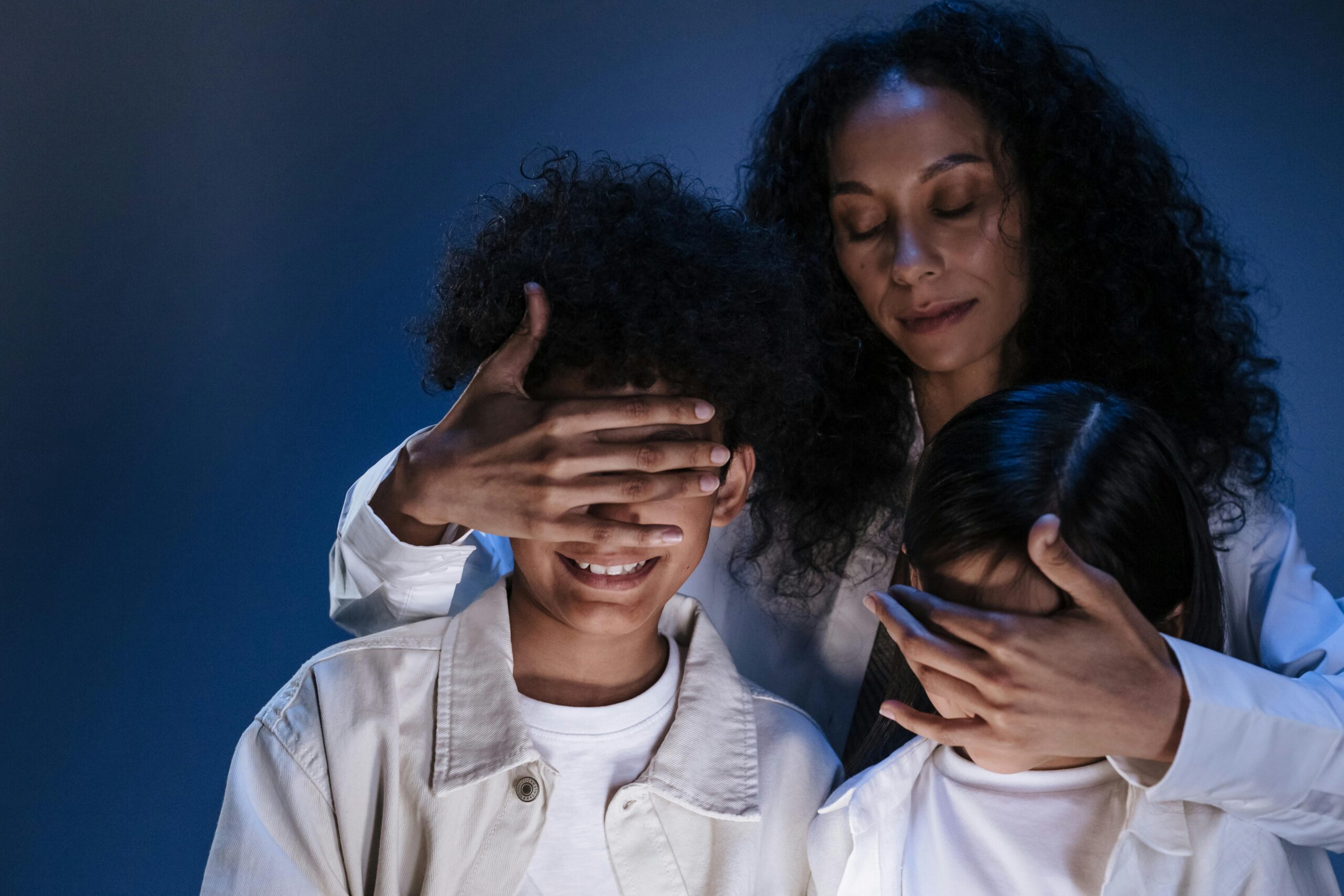
A new trend of family influencers, or rather, “kidfluencers” has emerged as another way to earn money through social media.
Influencers who share videos and photos of themselves online earn over US$100,000 annually, according to The Washington Post. In a recent article from Shopify, Instagram still leads the other social media platforms in terms of influencer reach, and “There’s a generally accepted Instagram influencer rate of $100 per 10,000 followers.” Though 13 is the minimum age to participate in most social media platforms, many parents post content featuring their children to document their milestones or post tips and tricks on being a parent.
However, such content may land in the hands of people with sinister intentions.
A simple video of a toddler wearing a furry outfit and swaying her hips to the beat of the music garnered more than 295,000 saves and comments on this social media like, “game is a game,” which is slang that suggests a strategy employed to achieve the desired outcome, usually sex. Some comments even threatened to touch the child.
According to a 2020 survey by the Pew Research Centre, 76 per cent of parents post information about their kids on social media. “Sharenting” is a phenomenon where parents overshare content about their children on social media, from children’s daily activities to their personal medical records.
Sarah Adams, a social media influencer who advocates for children’s digital safety, defines parental public oversharing as “people who consistently share images and information about their children online” and those who don’t grasp what should be “private and public.”
Though family bloggers have existed for many decades, Adams said the number of influencers shot up during the COVID-19 lockdown when people sought a connection with others, leading to oversharing becoming more common on the internet.
As parents receive more engagement on posts with their children, they get “trapped in a dopamine cycle” because such content with children performs better. “They want to feel that again, so they continue to post more about their children and focus their content on it,” she said.
Psychological Impact On Kid Influencers
Though a prepubescent child may not have direct access to social media, nothing is truly erased from the internet, and if their parents are posting content that features them without their knowledge, it can have adverse effects on those children in the future.
These posts can become a meme on the internet or a source of child exploitation and negligence, which can impact a child’s psychological development.
“It lowers their [a child’s] resiliency early on in these formative years where they’re building their identity, and their identity becomes about external likes and follows and external validation rather than growing it internally,” said Dr. Leslie Dobson. Dobson, a clinical and forensic psychologist, said that these children can develop significant emotional trauma and post-traumatic stress disorder as they get older.
She explains that as these children understand more about social media as they grow older, they often reminisce about their experiences, such as receiving more likes when they were younger and feeling good about themselves.
However, as they grow older, they notice declining likes and receive criticism instead.
“It leads to this lack of confidence, strength and lack of resilience for real-life adult trauma that we all eventually face,” she said.
Dobson, who has worked with pedophiles closely through her practice, said that though there may be certain protections online, there is not enough protection for children in the real world.
“Eventually, in the mind of a sexual predator, the image [of the child] becomes less stimulating over time, and they build an erotic infatuation with the child, and then they want to find the child in person,” Dobson said.
From social media posts, child predators can track your “IP address to your home and a child’s school,” according to Dobson. A study claimed that pedophiles do 80 per cent of dark web visits. Moreover, a 2022 StatsCan report points to a general increase in the number of police-reported cases of child sexual exploitation and abuse occurring online.
“It’s teasing them with these photos and stimulation, and it only takes one very sick individual to come to snatch your child,” Dobson said.
How A Pedophile Views Child-Centred Content
Anything a child does alone that could be considered sexualized in the mind of an adult is a point of concern for Dobson. This includes a child eating a hot dog, wearing a skirt, or shaking their hips back and forth. Pedophiles are attracted to prepubescent children and may “sexualize adult body parts on children.”
Worst of all, this is a way of giving free legal access to what the pedophiles see as seductive child photos.
According to the same 2022 StatsCan report, men and boys made up 91 per cent of those charged with child sexual exploitation and abuse, and they were typically far older than the victims.
Though the Canadian government proposed Bill C-63, the Online Harms Act, on Feb. 26, which intends to tackle online hate, the scope of its protection is limited to social media platforms, according to Matt Hatfield.
“They [the government] are trying to mitigate the harm on the places on the internet most people are,” said Hatfield. “It is a good faith effort to reduce quite a bit of the harm on the primary internet spaces today.”
Hatfield is an executive director at OpenMedia, a non-profit advocacy organization, and said that though there are some aspects of the bill that he does not agree with, if the bill is enacted, it will prioritize the needs of children.
However, this bill is not set up to recognize harms on the dark web and only focuses on social media, and Hatfield argues that this may be a good thing.
Moreover, for most types of content, social media platforms will need to have a risk mitigation strategy that meets the regulator’s adequacy standard. Currently, there is limited information available on those standards, Hatfield explained.
Nonetheless, financial penalties exist if a social media platform does not live up to its standards.
The bill suggests amending An Act respecting the mandatory reporting of internet child pornography by persons who provide an internet service and the Canadian Human Rights Act (CHRA).
Though social media platforms are expected to protect children, Hatfield points out that it will be “quite a while” before it’s enacted. He hypothesizes potential constitutional challenges to this bill.
Currently, in Canada, child abuse is not listed as a crime under the Criminal Code. However, Sinderela Chung from the Toronto Police Service said via email that there would be an investigation if harm to a child occurs, regardless of whether it is on social media or in real life.
In such a case, evidence will be gathered, and charges like harassment, child endangerment, failure to provide the necessities of life and criminal negligence could be laid, according to Chung.
Who Is Responsible For Protecting A Child On The Internet?
Adams says that the onus to protect a child falls on everybody, not just on the parents or the social media they are posting on.
“The parents take some responsibility because it is a parent’s number one job to keep their child safe,” said Adams.
Parents continue to “not listen to online experts and law enforcement” when they ask parents not to post certain things, according to her.
She also goes on to say social media platforms also play a huge role in protecting children from loopholes of parent-facilitated child influencers.
“They [social media platforms] aren’t doing the best job and monitoring the material a lot of time,” said Adams. “The platforms say you can’t have an account until you’re 13 unless your parents or your managers run it.”
In early 2023, Facebook reported 73.3 million pieces of content were reported for “sexual exploitation and child nudity,” and when a user comes across a post with suspected child porn on Instagram, users are given a warning with two choices, “get resources” or “see the post anyway,” according to a Wall Street Journal article.
There is also a responsibility for brands who give money to these influencers to sell their merchandise, who are “signing off on this continued exploitation” of children, said Adams.
According to a 2023 article from Goldman Sachs, the creator economy has surpassed US$250 billion worldwide, in which brands spend more than US$5 billion a year on influencers.
“It’s also society having to take a step back and say, we as adults shouldn’t be following children online, and we shouldn’t be supporting parents who exploit their children,” said Adams.
How A Parent Can Minimize Harm On Social Media

Dobson shares what has worked for her in protecting her children. The first is to keep accounts private and not post content featuring your children or provide any information that can give child predators any ability to “access or track” them.
Adams shares two rules to keep in mind: one, kids are not content, and two, parents should pause before they post. She urges parents to ask themselves these questions:
- Is this in the best interest of my child?
- Have I considered my child’s future feelings regarding sharing the image?
- Could this potentially be embarrassing for them in the future?
- Am I compromising their safety and privacy?
“You can have a thriving account and monetize a parenting account without the content revolving around your children,” said Adams.
Ishitaa Chopra is a fourth-year journalism student and a storyteller for On The Record, winter 2024.

